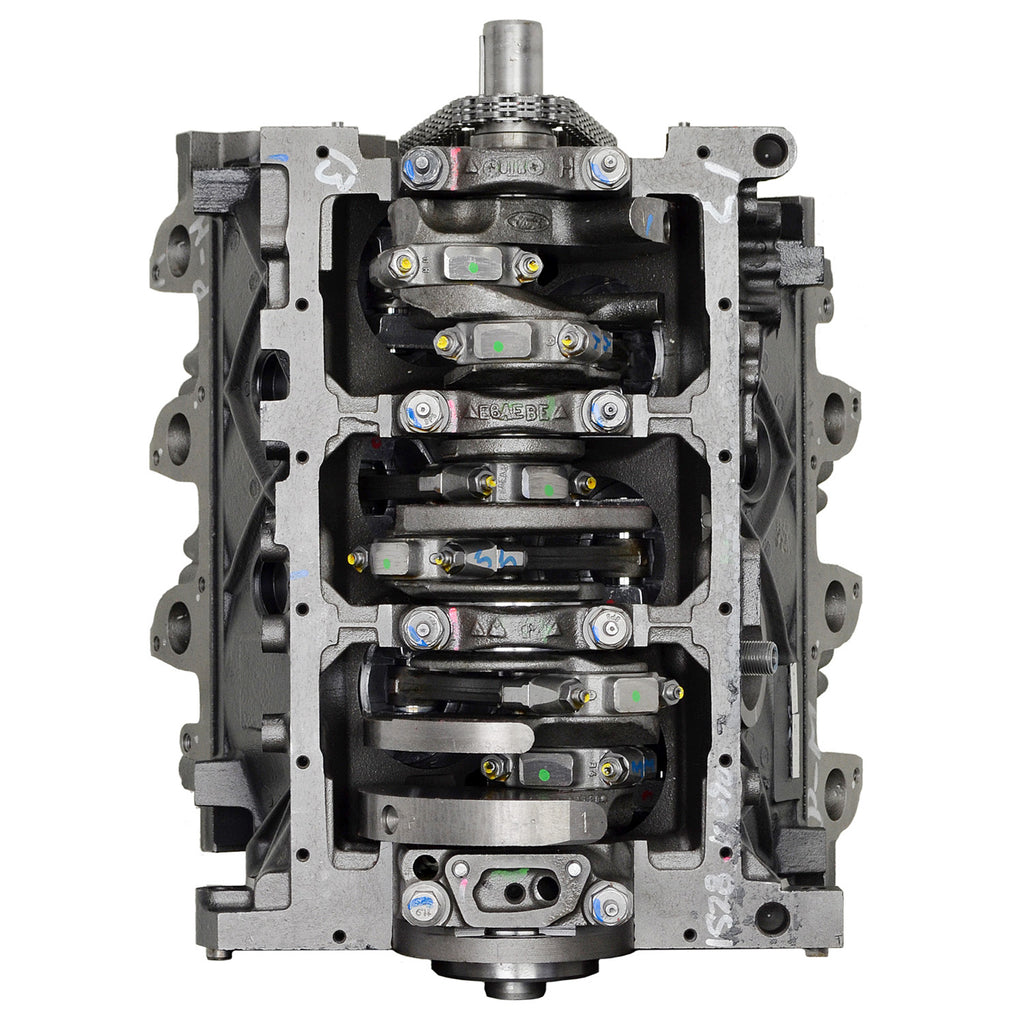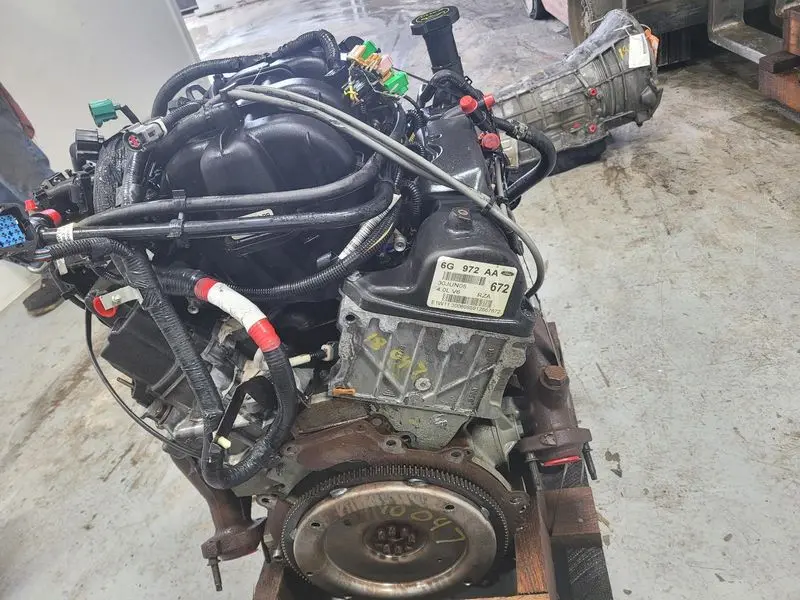How to Maintain and Optimize the 2.2 Ford Ranger Engine for Long-Lasting Performance
Comprehending the Essentials of Automobile Engines: Kinds, attributes, and features

Summary of Car Engines
A car engine works as the heart of a vehicle, converting gas into power to propel it ahead. This intricate system makes up numerous parts that operate in unison to make certain optimal efficiency and performance. The fundamental operation of an automobile engine involves the inner burning process, where gas and air are combined, fired up, and removed to develop power.
The engine's style can dramatically impact its performance, fuel effectiveness, and exhausts. Secret parts include the cylinder block, pistons, crankshaft, and camshaft, each playing a vital duty in the engine's total function. The cyndrical tube block houses the cyndrical tubes where combustion occurs, while the pistons convert the explosive energy from combustion right into linear movement. This movement is then changed right into rotational power by the crankshaft, making it possible for the automobile's wheels to transform.
In enhancement to these elements, engines usually make use of numerous systems such as gas shot, ignition, and cooling systems to improve performance and longevity. Understanding the standard technicians of auto engines is essential for detecting concerns and performing upkeep, ultimately contributing to the vehicle's dependability and effectiveness in time.

Types of Automobile Engines
Automobile engines can be categorized into numerous kinds based upon their style, fuel kind, and functional principles. 2.2 ford ranger engine. One of the most usual classifications consist of inner combustion engines (ICE), electric engines, and crossbreed engines
Interior combustion engines, which can be more split right into gas and diesel engines, run by sparking a fuel-air mixture to generate power. Gas engines are generally lighter and smoother, while diesel motor are much more fuel-efficient and deal better torque.
Electric engines make use of electric power saved in batteries to power an electric motor, supplying instant torque and absolutely no emissions throughout procedure. As innovation developments, electrical cars (EVs) are progressively coming to be preferred for their environmental benefits and lower running costs.
Hybrid engines integrate elements of both inner combustion and electrical engines, enabling flexible power resources and enhanced fuel efficiency. They can operate in various modes, making use of either the fuel engine, the electrical motor, or both at the same time.
Each sort of engine has unique advantages and downsides, influencing their application in different car types and market sections, from small autos to durable trucks. Comprehending these kinds is essential for making notified decisions concerning automobile option and performance assumptions.
Engine Features Discussed
Recognizing engine functions is critical for grasping exactly how vehicles run effectively. At the core of any kind of inner combustion engine exists the essential procedure of transforming fuel right into mechanical power.
The ignition happens next, igniting the combination and producing a quick development of gases. This force drives the piston down throughout the power stroke, which inevitably converts right into the rotational motion of the crankshaft. The exhaust stroke then gets rid of the invested gases from the chamber, giving way for a new cycle to start.
In enhancement to these key features, engines likewise incorporate systems that handle cooling and lubrication, making sure ideal functional temperature levels and minimizing friction between relocating parts. This detailed interplay of functions makes it possible for the engine to generate the power essential for lorry propulsion while keeping efficiency and reliability. Recognizing these features supplies valuable insight into the complexities of auto engineering and boosts the capacity to detect and address engine-related problems efficiently.
Trick Engine Functions
Engine style includes several essential attributes that significantly influence sturdiness, performance, and performance. One of one of the most essential elements is the engine setup, which includes inline, V-type, and level styles. Each arrangement impacts the engine's equilibrium, power, and dimension outcome, therefore impacting general vehicle dynamics.
Another necessary attribute is the engine displacement, referring to the complete volume of all cyndrical tubes. Bigger displacements typically yield even more power however may compromise fuel performance. Engine materials also play a critical duty; lightweight and high-strength products, such as aluminum and magnesium alloys, boost efficiency without adding excessive weight.
The kind of fuel injection system utilized-- such as multi-port or direct shot-- affects burning performance and emissions. Supercharging and turbocharging are features that increase engine efficiency by forcing additional air into the burning chamber, increasing power outcome without substantially enhancing engine size.
Finally, the visibility of innovative engine monitoring systems enhances fuel-air mixture and ignition timing, contributing to smoother procedure and better gas economy. Collectively, these features define an engine's capacities, establishing the foundation for its efficiency and durability in a competitive vehicle landscape.
Upkeep Tips for Engines
Appropriate engine upkeep is critical for ensuring optimum efficiency and long life, as disregarding regular care can lead to considerable problems down the line. To maintain your engine effectively, begin with find out routine oil modifications, usually every 3,000 to 7,500 miles, depending upon the kind of oil utilized. Fresh oil lubricates engine parts, minimizing rubbing and wear.
In addition, keeping an eye on coolant levels is vital to prevent overheating. Guarantee that the coolant is topped up and remains in great problem to keep efficient temperature guideline. Consistently change and examine air and fuel filters, as blocked filters can prevent airflow and fuel shipment, endangering engine efficiency.
Furthermore, take notice of spark plugs and ignition systems. Malfunctioning or used trigger plugs can bring about misfiring and lowered performance. Inspecting the battery terminals and links for rust is also necessary, as a weak battery can affect engine beginning.

Conclusion
In recap, a detailed understanding of cars and truck engines encompasses different types, features, and vital attributes that significantly influence lorry efficiency. Internal combustion engines, together with electrical and hybrid alternatives, demonstrate diverse systems for energy conversion. 2.2 ford ranger engine. Acknowledging the vital functions, such as intake and exhaust cycles, along with crucial engine attributes like arrangement and gas shot systems, furnishes vehicle proprietors with the understanding necessary for effective upkeep and operation, inevitably boosting lorry durability and performance
A vehicle engine serves as the heart of a car, converting gas into mechanical energy to thrust it forward. The fundamental procedure of an automobile engine includes the internal combustion procedure, where gas and air are blended, ignited, and eliminated my site to produce power.
Frequently change and examine air and fuel filters, as clogged up filters can hinder air flow and fuel delivery, endangering engine performance. - 2.2 ford ranger engine
In recap, a thorough understanding of auto engines includes numerous types, functions, and essential functions that substantially affect vehicle efficiency. Recognizing the essential functions, such as intake and exhaust cycles, together with crucial engine features like configuration and fuel shot systems, equips auto owners with the expertise required for reliable maintenance and procedure, inevitably enhancing automobile durability and effectiveness.